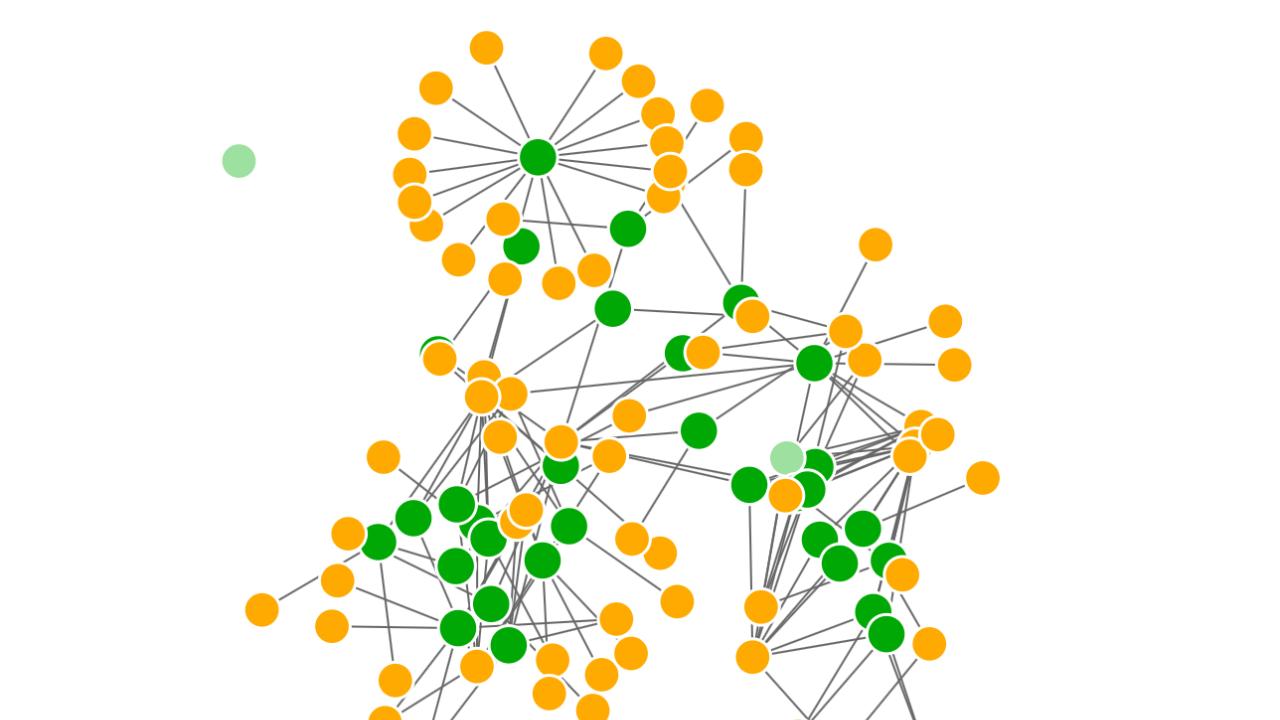
Researchers in ICTP's Quantitative Life Sciences (QLS) section integrate a wide range of different disciplines, using their physics backgrounds and techniques in population genomics and game theory, algorithmic development and analysis, molecular and cell biology, and economics and quantitative finance. Recent research and publications by QLS scientist Jacopo Grilli illustrate how richly interdisciplinary the field is. Grilli, who joined ICTP in 2019, is a biological physicist interested in theoretical ecology, statistical physics, and quantitative biology.
Grilli focuses on complex systems and the simple principles underlying complex phenomena, which arise in many different systems. The bridge between statistical physics and ecology, where Grilli’s interests lie, includes investigations in genomics, microbial communities, and most recently, C. Elegansworms.
Grilli worked with an experimental group in the Netherlands that focuses on investigating the aging process, work that resulted in a paper on gene expression during to stress events, published in BMC Biology in December of 2019. The collaboration looked at finding a way to predict how well an individual will deal with the stress of extreme heat. “What characterizes aging is the loss of an ability to respond to environmentalperturbations,” i.e. stress from the environment, says Grilli, noting that how an individual deals with stress and recovers from it varies widely. “We wanted to know if differing responses to stress were related to lifespan differences, but defining response to stress in a quantitative way is a nontrivial task,” explains Grilli.
This is where Grilli’s experience with complex systems and high-dimensional systems (systems that include many, many factors and elements) comes into play. Working with well-studied soil worms, C. Elegans, the group looked at gene expression during and after a stress event, as an indicator of an individual’s stress response. With thousands of genes and proteins involved, it was not clear how to describe the dynamics of this complicated response.
Grilli and his colleagues worked out a system of weighted gene expression, combining the behavior of many proteins during and after a stressful event to quantitatively describe how well an individual responds. “We looked at individuals exposed to stress – heat – for different times and at different temperatures, and were able to quantify how a specific population responds to stress,” says Grilli. “With a different strain of C. Elegans, one that has a different life expectancy, the stress response and recovery was different. So is there a relationship between the ability to respond to stress and lifespan? Yes. Basically the strains that recover faster are also the strains that tend to live longer.”
“It was a very nice collaboration, combining theory and modeling with experimentation,” says Grilli. “The next step is to look at the differences in the same properties of stress response across a lifespan, instead of between individuals and populations. What would be really cool is to draw a stronger connection between how old these individuals are and their response to perturbations.”
One of the exciting parts of Grilli’s work as a biological physicist is its interdisciplinary nature, and the large number of systems he works with, from proteins and gene expression to microbes that live in humans. For the latter, Grilli recently investigated how different species of microbes coexist and interact. Why does an ecosystem have an abundance of one species and smaller populations of others, and how and why do those numbers vary? What forces shape observed variations? “We wanted to look more deeply into the dynamics of microbial communities and their composition over time,” says Grilli.
A paper he published on the topic distills three mathematical principles that characterize how communities of species fluctuate. “It’s a robust description of quantitative universal properties of microbial communities, how abundance and variance of species vary across these communities and over time. And they are common to microbial communities in very different places: in the human gut and in the ocean, the properties of these microbial communities are the same,” says Grilli. He is pursuing this line of investigation with current work that dives into how species’ abundance is affected by each other. Correlated patterns of species abundance are related to how much species are similar or different; it may be that when species are similar they compete for similar resources. Another possible scenario is that similar species respond similarly to environmental changes, so their abundance fluctuates similarly, explains Grilli. He’s working on finding ways to describe the dynamics quantitatively, with the answer emerging with fluctuations appearing more dependent on environmental changes. Evidence and descriptions of this are currently turning into one of Grilli’s future papers.
The COVID pandemic presented an opportunity for Grilli to focus his skills on yet another discipline, epidemiology, or the study of disease patterns and determinants. He is one of several ICTP scientists who are using their (statistical physics?) expertise to ensure the integrity of data being used in efforts to fight the spread of the coronavirus. Their goal is to help policymakers find ways to intervene ahead of COVID-19 infections, to minimize the enormous social and economic disruption caused by outbreaks.
“I have been doing a lot of reading, sorting through papers, trying to understand what is relevant and what is not,” says Grilli. Grilli, together with his QLS colleague Matteo Marsili, and Guido Sanguinetti, a researcher at SISSA in Trieste, has authored a paper assessing the impact and effectiveness of coronavirus prevention methods. Instead of forecasting future patterns, the group is using their experience with complex systems to do backwards contact tracing to reconstruct contagion. This reverse epidemiology method could be used to help understand how pandemic dynamics would have changed if different prevention measures were instituted at different times.
The overarching thread running through Grilli’s seemingly disparate lines of investigation is the search for simple rules and minimal assumptions underpinning complex phenomena. From proteins and gene expression to microbial communities to pandemics, the wide variety of Grilli’s interdisciplinary work promises to expand ideas of what physicists study and what methods from physics can tell us about our complex world.
















